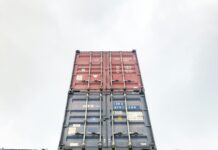
As part of plans to grow the locally owned container shipping fleet, the South Korean government will set aside around US$2.5 billion to increase the fleets of SM Line and other South Korean feeder operators by 100,000 TEUs.
The kitty is targeted at SM Merchant Marine, commonly known as SM Line, Sinokor Merchant Marine, Korea Marine Transport Company (KMTC Line), Pan Ocean, CK Line, Namsung Shipping and Dongjin Shipping.
Currently, these companies have a combined boxship fleet of approximately 400,000 TEUs.
The Ministry of Oceans and Fisheries said, “We hope to increase these operators’ competitiveness in the intra-Asia shipping sector. Furthermore, we’re supporting the development of new routes for shipping companies operating intra-Asia routes where competition is intensifying.”
The financial support will see Korea Ocean Business Corporation (KOBC) acquiring green bonds issued by the shipping companies or offering reduced interest rates for loans that will be used for eco-friendly ship building.
State-controlled policy lender Korea Development Bank (KDB) and KOBC could also invest a certain percentage in eco-friendly newbuildings.
Trade between South Korea and ASEAN (Association of Southeast Asian Nations) is rapidly increasing. According to Korea Customs, the volume of containers transported between Korea and ASEAN member countries in the first quarter of 2024 was up 14% year-on-year, to 1,008,682 TEUs. If this trend continues, this year’s South Korea-ASEAN container flow is expected to exceed 4 million TEUs, up 52% from 10 years ago.
Rising trade flows have, however, not translated into higher profits for South Korean intra-Asia carriers, as mainline operators like Maersk Sealand and CMA CGM have been competing aggressively.
Mainline operators have been assigning ships of 4,000 to 5,000 TEU capacity, offering lower slot costs than South Korean feeder operators which have smaller ships.
The South Korean state’s strategy is in line with the country’s President Yoon Suk-yeol’s ambition to increase South Korea’s container shipping fleet to 2 million TEUs by 2030, a figure he disclosed during the opening ceremony of Busan port’s seventh container terminal on 5 April.
On 15 April, South Korea’s flagship carrier HMM unveiled plans to expand its fleet to 1.5 million TEUs, up from its previous ambition of 1.2 million TEUs, by 2026.
Martina Li
Asia Correspondent





